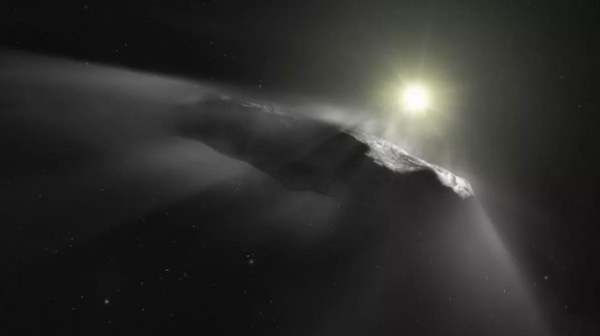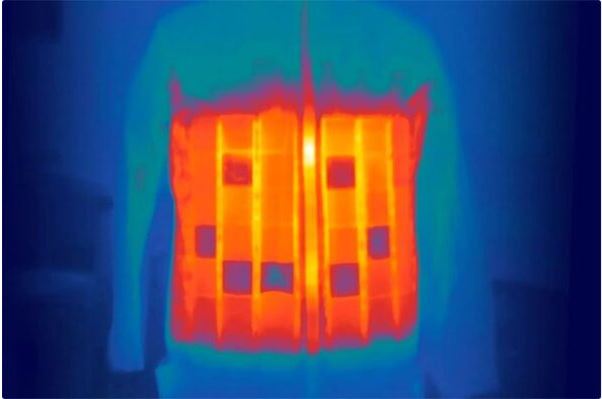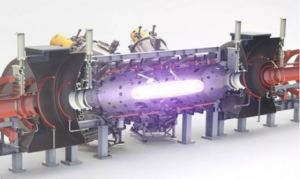In recent years, Oumuamua, the interstellar object that passed through our solar system in 2017, has become the subject of intense debate and speculation. While it initially sparked fascination due to its unusual characteristics, one of the most captivating theories was that it could be a “alien spy ship”. But where does this idea stem from, and what do current scientific findings reveal about the true origin of this mysterious object? In this article, we will explore the origins, characteristics, and latest research into Oumuamua, shedding light on what it really is and whether it could be connected to extraterrestrial life.
What Is Oumuamua?
Oumuamua, which means “scout” or “messenger” in Hawaiian, is the first known interstellar object to pass through our solar system. Discovered by astronomers in October 2017, this elongated, cigar-shaped rock piqued curiosity due to its strange trajectory, speed, and lack of a visible comet-like tail. Initial observations of Oumuamua showed that it was moving at an unusually high speed, suggesting that it did not originate from within our solar system, but rather from another part of the galaxy.

The “Alien Spy Ship” Theory
One of the most controversial hypotheses proposed about Oumuamua was that it could be an alien spacecraft sent to observe Earth. This theory was brought into the spotlight by Avi Loeb, a Harvard astronomer who suggested that the object’s unusual shape and motion might not be explained by natural forces alone. According to Loeb, the lack of a visible tail, which is typical for comets, and its sudden acceleration, could point to the possibility that Oumuamua was artificially made.
Loeb argued that the object’s interstellar origin, coupled with its peculiar properties, made it an intriguing candidate for a sophisticated probe sent by extraterrestrial intelligence. The idea that an advanced civilization could send such probes to monitor distant planets or solar systems became a topic of both excitement and skepticism within the scientific community.
Current Research: Unveiling Oumuamua’s True Nature
While the “alien spy ship” theory was thrilling, more recent research has provided alternative explanations that are grounded in more conventional astrophysical phenomena. A new study from Oxford University suggests that the lack of a comet-like tail could be explained by the chemical composition of Oumuamua. Unlike comets, which often release gas and dust as they pass close to the Sun, Oumuamua’s composition may have prevented such a release, explaining why it appeared to lack the usual tail.
Scientists believe that Oumuamua’s unusual acceleration was caused by the outgassing of hydrogen ice, a common phenomenon in comets, rather than the push from any external force, such as radiation pressure from the Sun or even an artificial source. The research indicates that the object is likely a fragment of a larger body that was expelled from its parent star system due to some form of gravitational or violent event.
Furthermore, the study suggests that Oumuamua’s high velocity and trajectory could indicate that it came from the thin disk of our galaxy, where heavy elements are abundant but water-rich compounds are less prevalent. This chemical distinction explains the absence of a tail and other features that would normally suggest a comet or asteroid.
What Makes Oumuamua So Fascinating?
Despite the debunking of some theories, Oumuamua continues to intrigue scientists and enthusiasts alike due to its unusual characteristics. Its size, shape, and speed are unlike anything seen before in the solar system. It’s estimated to be between 800 and 1,000 feet long, with a flat, elongated shape that gives it a sleek, metallic appearance.
One of the most puzzling aspects of Oumuamua was its unexpected acceleration. Unlike typical asteroids or comets, which slow down as they move through space, Oumuamua’s speed increased in ways that couldn’t be explained by the gravitational pull of nearby planets or the Sun. This caused many to wonder whether some unknown force was acting on it, further fueling theories about alien involvement.
Moreover, its highly elliptical orbit suggested that it was not bound to our solar system, and instead, it was just passing through. This raised questions about its origin—where did it come from, and where was it going? The possibility that it could have traveled across vast interstellar distances only added to the enigma.
A Comparison with Borisov: A Different Kind of Visitor
While Oumuamua’s trajectory and characteristics continue to be puzzling, another interstellar object—2I/Borisov—was discovered in 2019. Unlike Oumuamua, Borisov was a typical comet with a tail, suggesting that it was formed in a much more conventional manner. The stark difference between the two objects has led researchers to further investigate the possibility that Oumuamua may have come from a different type of stellar environment or that it had experienced unique physical processes that caused its strange behavior.
The comparison between Oumuamua and Borisov strengthens the argument that interstellar objects could have vastly different properties depending on their origin. While Borisov’s behavior aligns with traditional cometary features, Oumuamua’s distinct features—such as its flat shape, lack of a tail, and acceleration—may indicate that it came from an environment entirely different from the one that produced Borisov.
Could Oumuamua Have Been a Probe?
Although most scientific explanations lean toward natural phenomena, the idea of Oumuamua being an artificial object—a probe sent by an extraterrestrial civilization—cannot be entirely ruled out. The object’s unusual shape, lack of tail, and unexpected motion continue to inspire questions about the potential for life beyond our planet.
In fact, some proponents of the alien hypothesis argue that humanity’s understanding of space, materials, and physics may be too limited to fully comprehend what we saw. Advanced civilizations could very well use materials and technologies that appear completely foreign to us, which might explain why Oumuamua defies categorization.
However, while the notion of an alien probe is fascinating, current scientific consensus leans toward natural explanations for Oumuamua’s peculiarities. The possibility that this object could be the result of a natural gravitational disturbance or ejected fragment from a distant star system seems increasingly plausible.
Conclusion: The Mystery of Oumuamua Endures
Oumuamua’s brief yet impactful visit to our solar system has sparked debate, wonder, and curiosity across the globe. While early theories proposed that the object could be a spy ship from an advanced alien civilization, new research has offered alternative explanations rooted in the physical properties of the object and its interactions with the solar system.
Whether Oumuamua is a natural cosmic traveler or something far more mysterious remains a topic for further study and exploration. As our understanding of interstellar objects and the forces that shape them evolves, we may eventually uncover the true nature of Oumuamua’s origin.
In the meantime, Oumuamua will undoubtedly remain one of the most intriguing objects ever to pass through our solar system—a symbol of the mysteries that lie beyond our reach and understanding.










